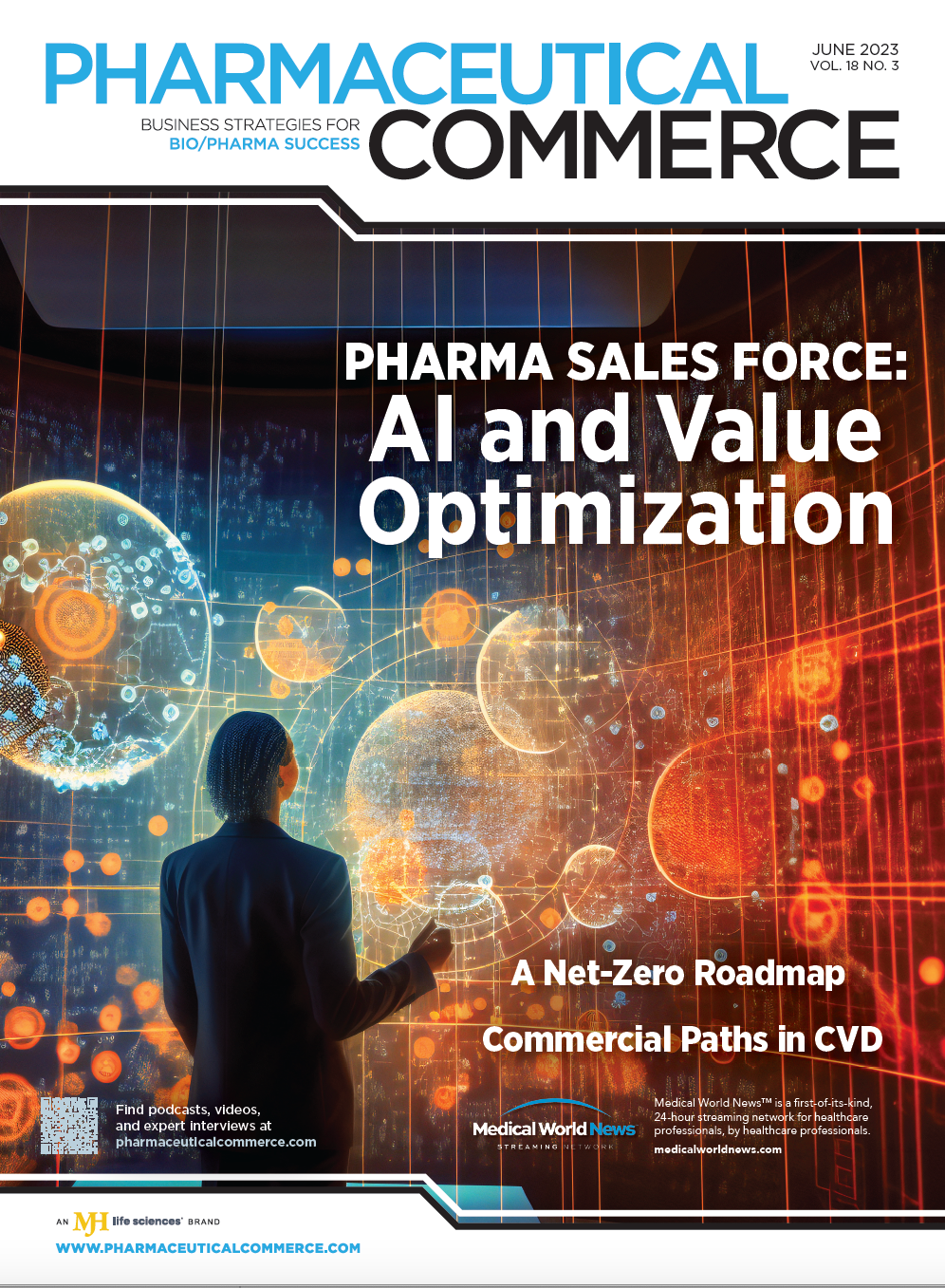Channel Fragmentation and Diversifying Product Archetypes
New PC column explores commercialization trends and how pharma can adjust to the new squeeze of market, regulatory, pricing, and gross-to-net pressures.
Bill Roth

Back in the mid-2000s, my management team made the rounds with industry leaders of healthcare payers, pharmacies, and distributors to alert them to a trend we saw. The response, however, was denial. We were attempting to alert them to a major seismic shift in the pharmaceutical market: new products coming to market were very different than the primary care brands and generics that our industry had nurtured for the past century, and we all needed to get ready for change.
The extreme examples driving the change were precision medicines, such as cell and gene therapies and orphan and rare drugs—with patient counts of less than 100 to less than 10,000, and price tags in the hundreds of thousands if not millions of dollars. We recognized these products didn’t fit into the large decaying legacy payer, pharmacy, and distribution models that formed in the 1980s and '90s.
In part, we were curious to know how these channels would evolve to embrace the new science but also to provide a heads up so the channels could begin to think about what might need to evolve and how they would accomplish their evolution. The lack of foresight—and inability to openly admit—that the industry was changing was disheartening because it meant that our manufacturer clients would have to design new models to accommodate the new realities of uber-low patient counts, exorbitant prices, payer hurdles like we’d never seen before, and complexities of therapy management.
We even had one executive tell us, “You’re going to have to pry our [historical] business model out my cold dead hands.” Within 10 years, that executive was no longer with the industry, let alone the multi-billion-dollar company he used to lead.
The point in this history lesson is that 20 years ago, Blue Fin Group saw a phenomenon developing that changed how products were commercialized depending on their “product archetype.” Fast forward to today, we track and analyze 10 archetypes—traditional brand, generic, vaccine, specialty lite, specialty generic, biosimilar, specialty (self-administration and healthcare provider administration), orphan and rare, cell and gene, and digital. When developing commercialization strategies, we separate and segment these archetypes because the payers, providers, pharmacies, patients, and physical flows are significantly different for each one.
A shelf life to the ‘copy-and-paste’ model
Having now worked with more than 450 pharmaceutical manufacturers, most struggle to visualize these segmentations and instead apply a “copy-and-paste” model to their contemporary commercial strategies based on the old models that gave success once upon a time. If we go back to a more simplistic time prior to the '80s, the pharmacy world was primary brand and primarily a cash-pay market. Pharmacy benefit managers (PBMs) did not exist. Generics had not really penetrated the market yet because there wasn’t a significant need. The concept of specialty was mainly around blood products, fertility, and HIV.
As PBMs came to power and the generics improved their quality and availability, the '90s and '00s were filled with rising brand prices combined with more generics that brought significant savings to plan sponsors and enhanced margins to payers, pharmacies, and distributors. But like most good ideas, there was a shelf life. The money to be made in generics was primarily in the first six to 18 months of introduction, and as long as new-item generics kept coming to market, all was well.
2012 marked the pinnacle of the “primary care LOE wave,” and 2016 marked the end of the party. The stocks of PBMs, retail pharmacies, and distributors took massive hits. Executive teams fully changed over. Business models were destroyed, not because of mismanagement or competition, but simply because one archetype took over from another. And this has been the trendline.
Here in 2023, we are facing the next wave of archetype transition, known as the “specialty LOE wave.” It features the expansion and explosion of proteomic and genomic medicines, and is hitting at a time of massive payer and regulatory reform. With more than $228 billion worth of specialty products set to lose exclusivity on their patents from 2023 to 2028, there is significant consideration for what this might mean. Many channels are counting on the success of specialty generics and biosimilar products. But traditional brand or reference products aren’t necessarily sitting back and converting markets like they did for primary care. The successful companies that are either defending their market or penetrating are realizing that even specialty generics and biosimilars need many elements of a traditional brand commercial strategy. These products still face prior authorizations, step edits, patient out-of-pocket hurdles, and other headwinds. For example, does interchangeability matter on a biosimilar if the product is not covered by the payer? That is what several adalimumab manufacturers are learning as they get to launch their generic products against the juggernaut Humira.
The market is experiencing similar trends now with so-called "specialty lite" products priced between $5,000 and $25,000 annually; there is no pharmacy that will support these products. They are too complex for retail pharmacy, which is 92% generic, and they are not priced high enough to be considered by specialty pharmacy. It’s simple: the economics don’t work for pharmacy, or at least not the current pharmacy models. Mind you, this is where e-commerce and digital pharmacies are supposedly coming to the rescue, but they have their own set of challenges with payer access, coordinated care, and the splintering of the patient journey by exacerbating the growing issue with polypharmacy.
Embracing commercial strategy snowflakes
So, what are the implications to industry? In a word: complexity. It means that each product, and, therefore, every commercial strategy, is essentially a snowflake of a business model—meaning that no two products or commercial strategies can be the same. If your team, advisors, or consultants are approaching you with “trust me I’ve done this for X number of years,” run, don’t walk away. With highly varied therapeutic areas, benefit designs, payer mixes, patient counts, payer headwinds, prescribing requirements, and regulatory headwinds, all the pieces of a commercial strategy need to align. The simple implication to pharmaceutical manufacturers is that copy-and-paste or ChatGPT-generated strategies aren’t going to get the manufacturer too far.
The ability to see even one to three years into the future has become a challenging task with huge downside risks. And the customers of pharma manufacturers—the payers, PBMs, pharmacies, and distributors—aren’t going to provide direction or insight as they themselves are figuring out how to survive this new world.
A practical first step is to consider the current and future portfolio. What therapeutic areas, archetypes, and benefit structures are likely in the development or M&A plans? A line we have been saying around the office recently is, “If the manufacturer is lucky enough not to be handed a complete response letter (CRL), what are the chances of a positive gross-to-net?” Enter the golden age of the CFO.
For the last two to three decades, pharma manufacturers have operated in commercial silos with marketing, field sales, payer and market access, channel and distribution, and patient support services operating as separate business units making decisions that have profound implications to net revenues and government prices. We see this mindset coming to an end and more fiscal planning and projections being the future.
But this is met at a time when payer, pharmacy, group purchasing organization (GPO), and distribution channels are fighting quarter by quarter to hold on to their own business and margin. That’s why we are coining the phrase that “fight for the dollar” is the new “flow of the dollar.” Models that show product simply moving from a third-party logistics provider (3PL) to a wholesaler, to a pharmacy, and to a patient with payer coverage and happy providers are only true for a small and shrinking portion of the market.
Bottom line: Look to the future and ensure you and your commercial teams are as educated as possible on industry and commercialization trends, along with new concepts of distribution and patient access, and, importantly, stay nimble. Stay tuned for my next column where we’ll dive deeper into the flight for the dollar and what you can do to prepare yourself for commercialization success.
About the Author
Bill Roth is the SVP of IntegriChain’s consulting business, which includes Blue Fin Group, a strategic consulting company he started in 2001, and the existing IntegriChain operational consulting business.
